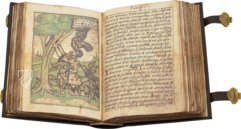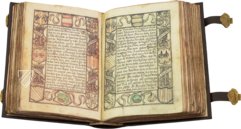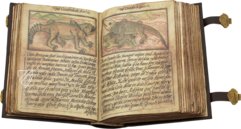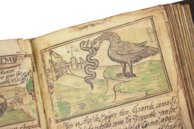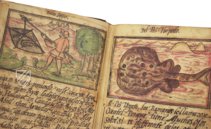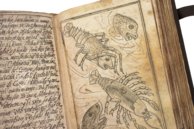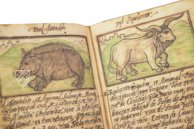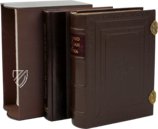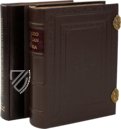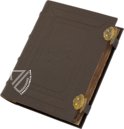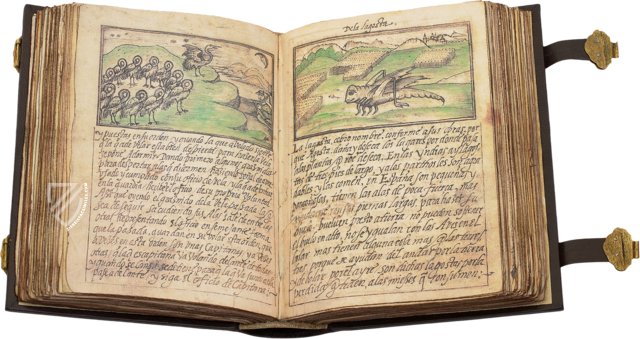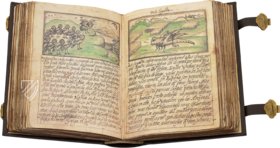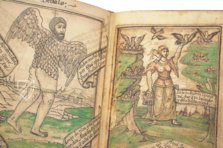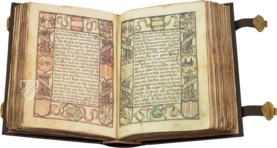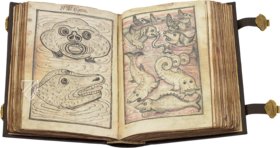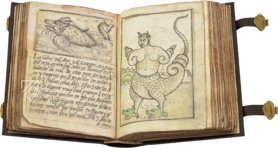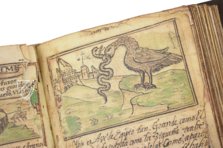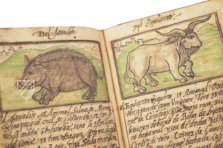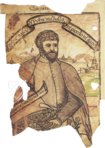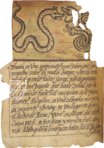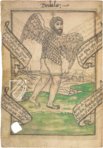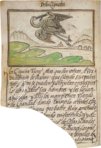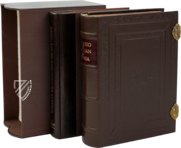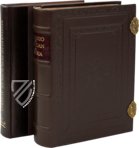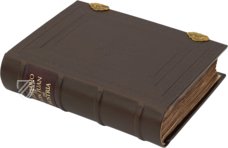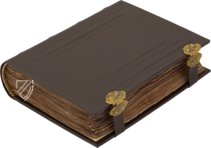Bestiary of John of Austria
(3,000€ - 7,000€)
Manuscripts with descriptions of the animal kingdom of the Middle Ages enjoyed great popularity since the 12th century at the latest. A special specimen of these so-called bestiaries is represented by the Bestiary of John of Austria, it is the only one of this type to be written in the Spanish language. Originating ca. 1570, it is closely linked with the name of the illegitimate son of Emperor Charles V, Don Juan d’Austria, who went down in history as the commander of the Spanish fleet, among others, in the Battle of Lepanto and as a governor general of the Netherlands. The wonderful illustrations of the sometimes-fantastical descriptions of animals and mythical creatures have not lost any of their allure for the beholder today.
Bestiary of John of Austria
Manuscripts with descriptions of the animal kingdom of the Middle Ages enjoyed great popularity since the 12th century at the latest. A special specimen of these so-called bestiaries is represented by the Bestiary of John of Austria, it is the only one of this type to be written in the Spanish language. Originating ca. 1570, it is closely linked with the name of the illegitimate son of Emperor Charles V, Don Juan d’Austria, who went down in history as the commander of the Spanish fleet, among others, in the Battle of Lepanto and as a governor general of the Netherlands. The wonderful illustrations of the sometimes-fantastical descriptions of animals and mythical creatures have not lost any of their allure for the beholder today.
Curious Creatures of the Animal Kingdom
The Bestiary of John of Austria was probably already an entertaining reading at the time of its creation. The compendium compiles a scientific lexicon on 484 pages of descriptions as well as moral or religious anecdotes of countless animal, human, and other creatures. The text is supplemented through the biblical depictions of the individually handled animals and creatures of wonder. Thus, bustling about in the Spanish bestiary among others are a faun with a dragon’s tail, poor people in snail shells, breasts or dogs heads as feet, or a person with feathers and wings. Naturally, alongside such curious and sometimes frightening mythical creatures, actual animals from the real world are described, should they be from local or exotic realms. Thus there are pages with water creatures and fish, mammals, and insects.
Great Names in History
The author of the text as well as the scribe and illustrator of the manuscript was the Spanish artist Martin Villaverde. With the Bestiary of John of Austria, he compiled the only bestiary in the Spanish language. Today it is found in the collection of the Monastery of Santa Maria de la Vid in Burgos. Nevertheless, its creation is closely linked with the name Don Juan de Austria (1547–1578). He was the illegitimate son of Holy Roman Emperor Charles V (1500–58) with Barbara Blomberg, the daughter of a citizen of Regensburg. Unrecognized by his father during his life, he grew up unknowingly with Spanish “surrogate parents” and was first called to court by his half-brother King Philipp II after the death of Charles V. As commander of the Spanish fleet, among others, at the victorious Battle of Lepanto, and as the governor general of the Netherlands, the tragic life of Juan de Austria took another lucky turn.
A Unique Characteristic
The Bestiary of John of Austria distinguishes itself through expressively written text and exceptional full-page miniatures. These are only occasionally colored, some with the luminous green of the fields and trees. Otherwise, the black-white of the drawings appears and lends the pictorial depictions of animal and human creatures a particular liveliness. The beautiful exterior of the manuscript, the dark leather binding with two filigree clasps, already allows one to surmise the mysterious content of the Spanish bestiary. It is in no way inferior to its numerous predecessors from England and France, particularly from the 12th century, and can be regarded as a worthy predecessor of the genre which became popular in the 16th century. Furthermore, the unique position as the sole Spanish bestiary makes it something very special.
Codicology
- Alternative Titles
- Bestiario de Don Juan de Austria
Bestiarium von Juan d'Austria - Origin
- Spain
- Date
- 1570
- Epochs
- Style
- Genre
- Language
- Script
- Humanistic cursive
- Illustrations
- 370 miniatures
- Content
- Bestiarium
- Artist / School
- Martín Villaverde
- Previous Owners
- John of Austria
Bestiary of John of Austria
Sea Monsters
A ship full of armed men rows through a blood-red sea full of horrific monsters – could this be a metaphor for the dangers faced by Christian sailors at the hands of the Turkish fleet that dominated the Mediterranean in the 16th century? Or perhaps these creatures resembling dragons and serpents are merely a metaphor for thalassophobia, the fear of deep bodies of water. What is certain is that medieval Europeans at the dawn of the Age of Exploration faced incredibly perilous and uncertain sea voyages.
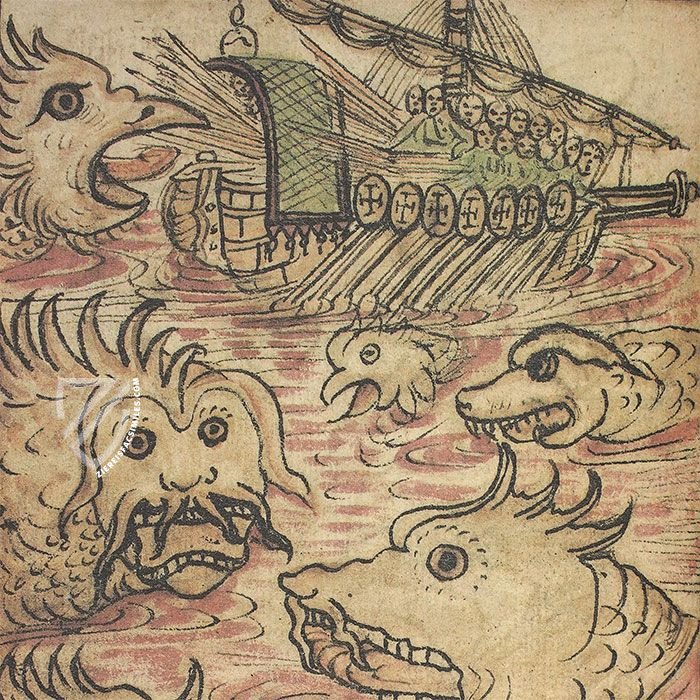
Bestiary of John of Austria
Patron Portrait
John of Austria was the illegitimate son of Holy Roman Emperor Charles V and Barbara Blomberg, the daughter of a burgher in the free imperial city of Regensburg. Shortly after his birth, he was taken from his mother to Spain where he was raised. His father’s will legitimized John and he was embraced by his brother King Philip II of Spain.
The greatest service performed by John for his brother and Christendom as a whole was at the Battle of Lepanto, where he commanded a fleet of the Holy League against that of the Ottoman Turks. It was the last major battle in the West to be fought entirely by rowed vessels, the largest naval battle since classical antiquity, and marked the highpoint of Ottoman military expansion in the Mediterranean.

#1 Bestiario de Don Juan de Austria
Language: Spanish
(3,000€ - 7,000€)
- Treatises / Secular Books
- Apocalypses / Beatus
- Astronomy / Astrology
- Bestiaries
- Bibles / Gospels
- Chronicles / History / Law
- Geography / Maps
- Saints' Lives
- Islam / Oriental
- Judaism / Hebrew
- Single Leaf Collections
- Leonardo da Vinci
- Literature / Poetry
- Liturgical Manuscripts
- Medicine / Botany / Alchemy
- Music
- Mythology / Prophecies
- Psalters
- Other Religious Books
- Games / Hunting
- Private Devotion Books
- Other Genres
- Afghanistan
- Armenia
- Austria
- Belgium
- Colombia
- Croatia
- Cyprus
- Czech Republic
- Denmark
- Egypt
- Ethiopia
- France
- Germany
- Greece
- Hungary
- India
- Iran
- Iraq
- Israel
- Italy
- Japan
- Lebanon
- Luxembourg
- Mexico
- Morocco
- Netherlands
- Palestine
- Peru
- Poland
- Portugal
- Russia
- Serbia
- Spain
- Sri Lanka
- Sweden
- Switzerland
- Syria
- Turkey
- Ukraine
- United Kingdom
- United States
- Uzbekistan
- Aboca Museum
- Ajuntament de Valencia
- Akademie Verlag
- Akademische Druck- u. Verlagsanstalt (ADEVA)
- Aldo Ausilio Editore - Bottega d’Erasmo
- Alecto Historical Editions
- Alkuin Verlag
- Almqvist & Wiksell
- Amilcare Pizzi
- Andreas & Andreas Verlagsbuchhandlung
- Archa 90
- Archiv Verlag
- Archivi Edizioni
- Arnold Verlag
- ARS
- Ars Magna
- ArtCodex
- AyN Ediciones
- Azimuth Editions
- Badenia Verlag
- Bärenreiter-Verlag
- Belser Verlag
- Belser Verlag / WK Wertkontor
- Benziger Verlag
- Bernardinum Wydawnictwo
- BiblioGemma
- Biblioteca Apostolica Vaticana (Vaticanstadt, Vaticanstadt)
- Bibliotheca Palatina Faksimile Verlag
- Bibliotheca Rara
- Boydell & Brewer
- Bramante Edizioni
- Bredius Genootschap
- Brepols Publishers
- British Library
- C. Weckesser
- Caixa Catalunya
- Canesi
- CAPSA, Ars Scriptoria
- Caratzas Brothers, Publishers
- Carus Verlag
- Casamassima Libri
- Chavane Verlag
- Christian Brandstätter Verlag
- Circulo Cientifico
- Club Bibliófilo Versol
- Club du Livre
- CM Editores
- Collegium Graphicum
- Collezione Apocrifa Da Vinci
- Comissão Nacional para as Comemorações dos Descobrimentos Portugueses
- Coron Verlag
- Corvina
- CTHS
- D. S. Brewer
- Damon
- De Agostini/UTET
- De Nederlandsche Boekhandel
- De Schutter
- Deuschle & Stemmle
- Deutscher Verlag für Kunstwissenschaft
- DIAMM
- Droz
- E. Schreiber Graphische Kunstanstalten
- Ediciones Boreal
- Ediciones Grial
- Ediclube
- Edições Inapa
- Edilan
- Editalia
- Edition Deuschle
- Edition Georg Popp
- Edition Leipzig
- Edition Libri Illustri
- Editiones Reales Sitios S. L.
- Éditions de l'Oiseau Lyre
- Editions Medicina Rara
- Editorial Casariego
- Editorial Mintzoa
- Editrice Antenore
- Editrice Velar
- Edizioni Edison
- Egeria, S.L.
- Eikon Editores
- Electa
- Emery Walker Limited
- Enciclopèdia Catalana
- Eos-Verlag
- Ephesus Publishing
- Ernst Battenberg
- Eugrammia Press
- Extraordinary Editions
- Fackelverlag
- Facsimila Art & Edition
- Facsimile Editions Ltd.
- Facsimilia Art & Edition Ebert KG
- Faksimile Verlag
- Feuermann Verlag
- Folger Shakespeare Library
- Franco Cosimo Panini Editore
- Friedrich Wittig Verlag
- Fundación Hullera Vasco-Leonesa
- G. Braziller
- Gabriele Mazzotta Editore
- Gebr. Mann Verlag
- Gesellschaft für graphische Industrie
- Getty Research Institute
- Giovanni Domenico de Rossi
- Giunti Editore
- Graffiti
- Grafica European Center of Fine Arts
- Guido Pressler
- Guillermo Blazquez
- Gustav Kiepenheuer
- H. N. Abrams
- Harrassowitz
- Helikon
- Hendrickson Publishers
- Henning Oppermann
- Herder Verlag
- Hes & De Graaf Publishers
- Hoepli
- Holbein-Verlag
- Hortus Deliciarum
- Houghton Library
- Hugo Schmidt Verlag
- Idion Verlag
- Il Bulino, edizioni d'arte
- ILte
- Imago
- Insel Verlag
- Instituto Nacional de Antropología e Historia
- Istituto dell'Enciclopedia Italiana - Treccani
- Istituto Ellenico di Studi Bizantini e Postbizantini
- Istituto Geografico De Agostini
- Istituto Poligrafico e Zecca dello Stato
- Italarte Art Establishments
- J. Thorbecke
- Jan Thorbecke Verlag
- Johnson Reprint Corporation
- Josef Stocker
- Josef Stocker-Schmid
- Jugoslavija
- Karl W. Hiersemann
- Kasper Straube
- Kaydeda Ediciones
- Kindler Verlag / Coron Verlag
- Kodansha International Ltd.
- Konrad Kölbl Verlag
- Kurt Wolff Verlag
- La Liberia dello Stato
- La Linea Editrice
- La Meta Editore
- Lambert Schneider
- Landeskreditbank Baden-Württemberg
- Leo S. Olschki
- Les Incunables
- Library of Congress
- Libreria Musicale Italiana
- Lichtdruck
- Lito Immagine Editore
- Lumen Artis
- Lund Humphries
- M. Moleiro Editor
- Maison des Sciences de l'homme et de la société de Poitiers
- Manuscriptum
- Martinus Nijhoff
- Maruzen-Yushodo Co. Ltd.
- MASA
- McGraw-Hill
- Militos
- Millennium Liber
- Müller & Schindler
- Nahar and Steimatzky
- National Library of Wales
- Neri Pozza
- Nova Charta
- Oceanum Verlag
- Odeon
- Orbis Mediaevalis
- Orbis Pictus
- Österreichische Staatsdruckerei
- Oxford University Press
- Pageant Books
- Parzellers Buchverlag
- Patrimonio Ediciones
- Pattloch Verlag
- PIAF
- Pieper Verlag
- Plon-Nourrit et cie
- Prestel Verlag
- Princeton University Press
- Prisma Verlag
- Priuli & Verlucca, editori
- Pro Sport Verlag
- Propyläen Verlag
- Pytheas Books
- Quaternio Verlag Luzern
- Reales Sitios
- Recht-Verlag
- Reichert Verlag
- Reichsdruckerei
- Riehn & Reusch
- Roberto Vattori Editore
- Rosenkilde and Bagger
- Roxburghe Club
- Salerno Editrice
- Sarajevo Svjetlost
- Schöck ArtPrint Kft.
- Scolar Press
- Scrinium
- Scripta Maneant
- Scriptorium
- Siloé, arte y bibliofilia
- SISMEL - Edizioni del Galluzzo
- Sociedad Mexicana de Antropología
- Société des Bibliophiles & Iconophiles de Belgique
- Soncin Publishing
- Sorli Ediciones
- Stainer and Bell
- Studer
- Styria Verlag
- Sumptibus Pragopress
- Szegedi Tudomànyegyetem
- Taberna Libraria
- Tarshish Books
- Taschen
- Tempus Libri
- Testimonio Compañía Editorial
- Thames and Hudson
- The Clear Vue Publishing Partnership Limited
- The Facsimile Codex
- The Folio Society
- The Marquess of Normanby
- The Richard III and Yorkist History Trust
- Tip.Le.Co
- TouchArt
- TREC Publishing House
- TRI Publishing Co.
- Trident Editore
- Typis Regiae Officinae Polygraphicae
- Union Verlag Berlin
- Universidad de Granada
- University of California Press
- University of Chicago Press
- Urs Graf
- Vallecchi
- Van Wijnen
- VCH, Acta Humaniora
- VDI Verlag
- VEB Deutscher Verlag für Musik
- Verlag Anton Pustet / Andreas Verlag
- Verlag Bibliophile Drucke Josef Stocker
- Verlag der Münchner Drucke
- Verlag für Regionalgeschichte
- Verlag Styria
- Vicent Garcia Editores
- W. Turnowsky
- Waanders Printers
- Wiener Mechitharisten-Congregation (Wien, Österreich)
- Wissenschaftliche Buchgesellschaft
- Wydawnictwo Dolnoslaskie
- Xuntanza Editorial
- Zakład Narodowy
- Zollikofer AG








